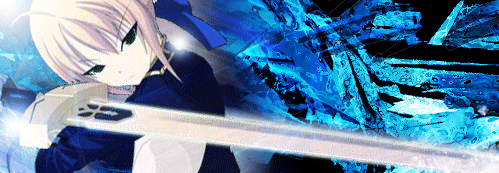Tuesday, November 24, 2009
品读三国
(一)邓艾破蜀,遣人赴洛阳报捷,修书司马昭:“今可封刘禅为扶风王,赐以资财,供其左右,以显归命之宠。”司马昭览毕,深疑邓艾有自专之心,乃发手书告知:“此事须候奏报,不可辄行。”邓艾忿忿回书:“吾既奉诏专征,当权宜行事,如何阻挡?”司马昭不悦,用计杀邓艾。 “无规矩不成方圆”,该你干的事你去干,不该你干的事就别去干,有些事最好想都不要想,中国人就认这个理。可怜邓艾一介武夫,不懂这个道理,居然把司马昭的“奉诏专征”当成回事,居大功而不得善终。 宋朝有个叫曹彬的将军,能征善战。有一次奉命攻城,敌兵将败,曹彬却突然下令停止进攻,诸将不解。他的意思是:之前圣上屡攻此城而不下,我等今日一举拿下,岂不是自己找死。于是,曹彬上奏,皇帝御驾亲征,结果顷刻破城,万民欢腾,龙颜大悦。 曹彬没有邓艾的功勋大,可他的结果比邓艾好多了,因为他懂规矩。(二)曹操攻徐州,俘吕布。吕布献媚:“布今愿降明公,公为大将,布副之,何愁天下不定?”时刘备在侧,吕布哀求:“公为座上客,布为阶下囚,何不发一言而相救乎?”吕布军中大将张辽怒斥:“吕布匹夫,大丈夫死则死耳,何惧之有。” 自古以来流传着两句话,“知遇之恩”和“士为知己者死”,可见要想遇一个英明的主子是多么的不易。张辽是个视死如归的汉子,却跟了吕布这么一个贪生怕死的家伙,连死都没有骨气(张辽最后并没被杀,曹操感其人品,收为大将)。 汉文帝时,晁错忠心耿耿,怀才抱负,堪称一代贤臣,而当吴楚七国向朝廷发难之时,汉文帝却把他给卖了。五代十国,当北汉大将杨继业正与宋军苦战,他的主子北汉王却怀揣着宋朝的官印,前来劝他投降。 我们有着太多“不遇”的悲哀。所以我们把“知遇”当成了一种奢求,一旦得遇明主,便要肝脑涂地,甚至以死相报。 一页页史书翻过,我一声声叹息。
Monday, November 23, 2009
献媚 xiàn mèi
为讨好别人而做出使人欢心的姿态、举动。
老爷翰苑蜚声,素羨风流太守;贱妾平康献媚,自惭窈窕佳人。 明 陈汝元《金莲记·湖赏》
有欲私其仆妇者,仆固黠,令其妻献媚勾引,而终不一任缱绻,主急甚。 清 采蘅子《虫鸣漫录》
卷二她不想用鲜花向主人献媚,遍身披上刺刀。 流沙河《草木篇》诗
老爷翰苑蜚声,素羨风流太守;贱妾平康献媚,自惭窈窕佳人。 明 陈汝元《金莲记·湖赏》
有欲私其仆妇者,仆固黠,令其妻献媚勾引,而终不一任缱绻,主急甚。 清 采蘅子《虫鸣漫录》
卷二她不想用鲜花向主人献媚,遍身披上刺刀。 流沙河《草木篇》诗
operon

The lac-operon consists of a operator, gene Z, gene Y, and Gene A.
The repressor protein will be able to bind onto the operator side. After binding onto the operator side, the RNA polymerase will not be able to proceed to read the DNA, and therefore, the DNA will not be transcripted.
In order for the RNA polymerase to be able to transcript the DNA, the lactose will bind onto the repressor, and therefore changing the shape of the repressor, and it will no longer be able to fit onto the operator.
After that, the RNA polymerase is able to proceed into transcripting the DNA without any obstacle blocking.
After transcription, it will form mRNA, and then it will form protein. The gene A codes for beta-galactosidase, which is able to break down lactose to form glucose.
Monday, November 16, 2009
MCB Quiz problem 7
The following reaction involving the breakdown of sugar A occurs in a bacterial cell. The gene that codes for the enzyme is part of an operon.
In an experiment, some of the bacterial cells were cultured in three flasks with 100 mg/ml of sugar A added. In flasks 1 and 2, compounds L and M were added respectively. Nothing was added to flask 3. The following results were obtained.
Concentration of B (mg/ml)
Flask 1
Flask 2
Flask 3
Addition of…
L
M
(nothing)
At 0 minutes
0
0
0
At 40 minutes
110
2
98
At 80 minutes
201
3
100
At 120 minutes
250
5
100
a) Which of the compounds (L or M) might be a gene repressor? Explain your answer. (5 marks)
M. The reason is because the function of the repressor is to stop the DNA from getting transcripted. If the concentration of the B is very less, this means that there are very less proteins present inside the cell, and this could be due to the large amount of repressor. The reason is because large amount of repressor will slow down the transcription process. The DNA will be transcripted to produce the enzymes, and therefore the sugar will be able to break down. Lesser amount of B means that there are also not enough amount of enzymes for breaking, and this shows that the transcription process is being slowed down by the repressor, therefore the translation process is also being slowed down, therefore, the proteins being produced are also lesser, therefore, the amount of B is less.
b) Suggest with explanations what compound L might be. (5 marks)
Compound L increases the production of the B, therefore, it could be the enzyme that breaks down the sugar A.
It can also be a inductor which is able to bind with the repressor, and therefore preventing the repressor from binding onto the operator of the DNA, and therefore, it is able to go through more transcription, and therefore going through more translation, and then, it will be able to produce more enzymes that is able to break down the sugar A into B and C, and therefore, the concentration of B increases.
爱不释手(喜爱到极点而不舍得放手。形容非常喜欢。)
从前有一个读书人,他非常喜欢苏东坡的诗作, 每当抄录到苏东坡的一首诗,便反复吟咏, 爱不释手。
有一天, 他到西湖游玩,偶然间发现一块石壁上面刻有一首诗,题款人是“苏东”。 这一发现, 他高兴得像拾到宝一样,虽然题款的名字少了一个“坡”字,他肯定只是刻石的人漏刻罢了,一定是苏东坡的诗作。
他即刻拿出笔墨纸砚, 把这首诗抄录下来,然后坐在西湖边的石椅上摇头摆脑地吟咏,越吟咏越觉得有味道,越肯定它是苏东坡的作品。
有一个游人看见他这样入迷,便开口向他借来看。
“不!不行!”他生怕那游人来抢, 把手抄本捏得更紧,“我只能念给你听!”
当他把这首诗念完后,游人忽然哈哈大笑, 说道:“你虽然对苏东坡的诗作爱不释手, 但也要分清楚是不是苏东坡的作品啊! 告诉你吧, 我叫苏东, 和苏东坡一点关系也没有,这首诗是我十年前游西湖时刻的!”
有一天, 他到西湖游玩,偶然间发现一块石壁上面刻有一首诗,题款人是“苏东”。 这一发现, 他高兴得像拾到宝一样,虽然题款的名字少了一个“坡”字,他肯定只是刻石的人漏刻罢了,一定是苏东坡的诗作。
他即刻拿出笔墨纸砚, 把这首诗抄录下来,然后坐在西湖边的石椅上摇头摆脑地吟咏,越吟咏越觉得有味道,越肯定它是苏东坡的作品。
有一个游人看见他这样入迷,便开口向他借来看。
“不!不行!”他生怕那游人来抢, 把手抄本捏得更紧,“我只能念给你听!”
当他把这首诗念完后,游人忽然哈哈大笑, 说道:“你虽然对苏东坡的诗作爱不释手, 但也要分清楚是不是苏东坡的作品啊! 告诉你吧, 我叫苏东, 和苏东坡一点关系也没有,这首诗是我十年前游西湖时刻的!”
Sunday, November 15, 2009
School Project
最近我的学校有一个project。这个project非常重要。如果我们没做的话,就不能毕业了, 可见得他有多么重要。 这个project是需要先在电脑上做,然后再打印出来。打印出来后不是只要交给老师就大功告成了,它还有一个更可怕的一关,就是演讲!
我向来是一个安静又不擅于演讲的人。可是, 这个project却要我在老师的面前演讲,而且不是一个老师,而是三个!面对一个老师我就已经紧张得连屎尿都流出来了, 可是却要在三个老师面前演讲啊。
而且, 我连准备都还没准备好, 都还没开始做,而且又要在这五天内赶着做。其实这个project是所有的二年级学生都必须做的。演讲的阶段一共分成三天,三天里一共分成三批人。而我却偏偏是第一批的“幸运儿”。
我希望我的这个project能够成功地渡过, 那么我就能不用再愁这一关了。
我向来是一个安静又不擅于演讲的人。可是, 这个project却要我在老师的面前演讲,而且不是一个老师,而是三个!面对一个老师我就已经紧张得连屎尿都流出来了, 可是却要在三个老师面前演讲啊。
而且, 我连准备都还没准备好, 都还没开始做,而且又要在这五天内赶着做。其实这个project是所有的二年级学生都必须做的。演讲的阶段一共分成三天,三天里一共分成三批人。而我却偏偏是第一批的“幸运儿”。
我希望我的这个project能够成功地渡过, 那么我就能不用再愁这一关了。
Wednesday, November 11, 2009
RP negative attitude
In RP, however, everyone will always skip lessons whenever they face difficult problems. I do not like people who are like that. The reason is because they do not consider what other people or what other teammates are facing. If the problem is difficult, that does not means that other teammates do not face the same difficulty. If they just skip lesson like that, this will only let the other teammates facing a more difficult situation. For those people who skip lesson halfway, I think the teachers should give them as F, so that this will teaches them a lesson. With more people, I think that there will be more brains working, there will be more helping hands around for help. Even if the teammates does not do anything as a team, at least he is still able to help out in doing some research or doing the powerpoint slides. Aman who works alone, dies alone. Therefore, in order to do things, it will always be better to have more people helping us. So that whenever we make some mistakes, the other person who knows it better will also correct us, and tell us the correct answer. With more people, we can also exchange the information that we know, or the research that we found out. The reason is because different people will know different things. Like for example, person A knows chemistry very well, person B knows physics very well, and person C knows Biology very well. Together, they are able to provide the information that they know to ech other, and exchange information, and teach each other. In this case, everyone is able to learn something new in the end of the day.Actually, I think students should not skip lessons. If they abandon the other teammates, the teammates can still join the other team for the problem. But the ones who skip, they will not be able to learn new things in the end, because the reason why we come to school is to learn new things. If we do not learn new things, we have no reason of coming to school. If the classmates do not wish to come to school, I think that they should just quit school, because there is no reason for them to come to school and not learn anything.Therefore a good teamwork is very important. When we work hard together, and make a good presentation, we are able to help each other in getting good grades too.
马来人的无情
很久以前, 我的父亲在一间工厂工作。他当时为了赚多一点钱, 便加了夜班。而他第一次加夜班时, 有好几位马来人也在工厂里, 只有我父亲一个华人。另一天早上,有贵重的东西不见了。他们一起联合起来说看见我的父亲偷那个东西。最后丢了饭碗。
你们说我身为他的家人,听见了能不气吗?
在我的班上, 有一个中国学生。他几乎每天都被同班的马来学生欺负。他们取笑他, 作弄他, 推他, 打他。身为华人的我能不气吗? 如果你们是在新加坡或是在马来西亚, 这种种族之战很普通。虽人不是公开示意,可是却感受得到种族对彼此的不满。 况且,我们华人没有做什么伤天害理的事。事发者通通都是由马来人先开始。
你们说我身为他的家人,听见了能不气吗?
在我的班上, 有一个中国学生。他几乎每天都被同班的马来学生欺负。他们取笑他, 作弄他, 推他, 打他。身为华人的我能不气吗? 如果你们是在新加坡或是在马来西亚, 这种种族之战很普通。虽人不是公开示意,可是却感受得到种族对彼此的不满。 况且,我们华人没有做什么伤天害理的事。事发者通通都是由马来人先开始。
Tuesday, November 10, 2009
MCB problem 6 quiz
1)
a) A normal cell with no genetic defects was exposed to large amounts of a DNA-damaging chemical (chemical X) for 5 minutes. After a few hours, the cell died. Based on what you had learnt today, account for the death of the cell. (5 marks)
b) Some environmental pollutants (e.g. cigarette smoke) can cause adducts to form on DNA. These are organic molecules that bind to DNA, causing a bulge in the molecule. Suggest how these adducts can interfere with cell replication. (5 marks)
a) The reason why the cell will die is because the DNA has been denatured. In today's lesson, we learned that there can be many possible ways of DNA denaturing. Firstly, it could be due to a foreign molecule attaching to the bases, and not allowing the DNA polymerase or helicase to pass through the DNA for transcription or for replication. Secondly, it could be that there is a cross link, which causes pyrimidine dimers to occur. These cross link can be caused by the UV rays emitting photons to the DNA. When this occurs, the sugar-phosphate backbone will also get distorted too. In this case, it is able to repair when the photolyase are able to remove the pyrimidine dimers. Thirdly, it will cause the sugar-phosphate backbone to break. In this case, the DNA ligase IV is able to join the sugar-phosphate backbone back. Forthly, it is the Base mismatch. The DNA glycosylase can recognize the mismatch base site and remove its base. Then, the endonuclease removes neighboring nucleotides, and the gap is filled by DNA polymerase I and DNA ligase.
The death of the cells could be due to the fact that the cell do not have enough immunity. Like for example maybe it does not have enough of the repairing mechanism. Like for example, in the problem statement, we could see that the one with a lack of DNA ligase IV cannot survive very long. Therefore, it does not have the ability to do faster repairing. Also, the damage rate is more than the repair rate, therefore, the rate of survival will keep dropping.
b) In cell replication, helicase will firstly go through the DNA, and it will split the double strand into a single strand, and therefore it will start reading a single strand coding, and therefore it will then replicate mRNA. In order to replicate mRNA, the helicase needs to go though the DNA, and with the molecule obstructing the pathway, the helicase might not be able to split the double strand.
Also, in the replication process, where the DNA will replicate from a single strand to a double strand by the DNA polymerase III. The DNA Polymerase III will not be able to read the complete sequence of the DNA, and with the molecule obstructing the reading, it will not be able to go on to complete the full strand coding, therefore the DNA sequence will not be complete.
a) A normal cell with no genetic defects was exposed to large amounts of a DNA-damaging chemical (chemical X) for 5 minutes. After a few hours, the cell died. Based on what you had learnt today, account for the death of the cell. (5 marks)
b) Some environmental pollutants (e.g. cigarette smoke) can cause adducts to form on DNA. These are organic molecules that bind to DNA, causing a bulge in the molecule. Suggest how these adducts can interfere with cell replication. (5 marks)
a) The reason why the cell will die is because the DNA has been denatured. In today's lesson, we learned that there can be many possible ways of DNA denaturing. Firstly, it could be due to a foreign molecule attaching to the bases, and not allowing the DNA polymerase or helicase to pass through the DNA for transcription or for replication. Secondly, it could be that there is a cross link, which causes pyrimidine dimers to occur. These cross link can be caused by the UV rays emitting photons to the DNA. When this occurs, the sugar-phosphate backbone will also get distorted too. In this case, it is able to repair when the photolyase are able to remove the pyrimidine dimers. Thirdly, it will cause the sugar-phosphate backbone to break. In this case, the DNA ligase IV is able to join the sugar-phosphate backbone back. Forthly, it is the Base mismatch. The DNA glycosylase can recognize the mismatch base site and remove its base. Then, the endonuclease removes neighboring nucleotides, and the gap is filled by DNA polymerase I and DNA ligase.
The death of the cells could be due to the fact that the cell do not have enough immunity. Like for example maybe it does not have enough of the repairing mechanism. Like for example, in the problem statement, we could see that the one with a lack of DNA ligase IV cannot survive very long. Therefore, it does not have the ability to do faster repairing. Also, the damage rate is more than the repair rate, therefore, the rate of survival will keep dropping.
b) In cell replication, helicase will firstly go through the DNA, and it will split the double strand into a single strand, and therefore it will start reading a single strand coding, and therefore it will then replicate mRNA. In order to replicate mRNA, the helicase needs to go though the DNA, and with the molecule obstructing the pathway, the helicase might not be able to split the double strand.
Also, in the replication process, where the DNA will replicate from a single strand to a double strand by the DNA polymerase III. The DNA Polymerase III will not be able to read the complete sequence of the DNA, and with the molecule obstructing the reading, it will not be able to go on to complete the full strand coding, therefore the DNA sequence will not be complete.
Monday, November 9, 2009
MHC
a) In the MHC Class I, the antigenic proteins which enters the Antigen Presenting Cell will firstly undergo degradation by a protein called protease. After degrading, it will be transported by TAP, and then the antigenic peptide will be loaded onto the Class I MHC Molecule. The MHC then move to the cell surface and display the antigenic peptide. The T killer cell bind onto the MHC molecule, and the killer T cell will then be activated, and then it will be able to kill the infectious foreign particles directly.
b) In the MHC Class II, when the antigens enter the Antigen Presenting Cell, phagosomes are formed, and the phagosomes containing the antigens are merged with the lysosome. Then, the MHC class II molecules migrate into the phagolysosome where the antigen is being degraded, and the invariant chain is removed for peptide binding. The Class II MHC molecule then moves to the cell surface, and present the antigenic peptide to the helper T-cell, and it will help to activate immune cells to fight against the foreign infectious particles.
b) In the MHC Class II, when the antigens enter the Antigen Presenting Cell, phagosomes are formed, and the phagosomes containing the antigens are merged with the lysosome. Then, the MHC class II molecules migrate into the phagolysosome where the antigen is being degraded, and the invariant chain is removed for peptide binding. The Class II MHC molecule then moves to the cell surface, and present the antigenic peptide to the helper T-cell, and it will help to activate immune cells to fight against the foreign infectious particles.
Wednesday, November 4, 2009
DNA Folding (School revision)

 1) Firstly, the long strand double helix DNA coil a few rounds around the octomer histones. The octomer histones are positively charged.
1) Firstly, the long strand double helix DNA coil a few rounds around the octomer histones. The octomer histones are positively charged. 2) In order to stabilise the DNA being uncoiled from the octomer histone, another protein called the H1 histone will attached onto the DNA and the octomer like a scotch tape, to stabilise it. The ending product is called nucleosome.
3) DNA continued to form more and more nucleosomes. After that, these nucleosomes in a long chain will coil itself like a spring shape. It will then be known as solenoid.
4) The solenoid then attach to another protein called scaffold to form loops. That is called the loop solenoid.
5) It then made up into chromosomes.
(WARNING: Information may be incorrect. If there are any incorrect information, or anything more to add, please give comments. )
Monday, November 2, 2009
DNA Replication (MCB school revision)

Okazaki fragment - short fragment of DNA.
Helicase - separates the double strand.
Single-strand binding protein – prevents single strand coiling back to original shape.
DNA Polymerase synthesize only 5’ to 3’.
Helicase - separates the double strand.
Single-strand binding protein – prevents single strand coiling back to original shape.
DNA Polymerase synthesize only 5’ to 3’.
5’ to 3’ (direction of DNA polymerase) = Leading strand (3’ to 5’ old strand, 5’ to 3’ new strand, direction towards helicase)
5’ to 3’ (direction of DNA polymerase) = Lagging strand (5’ to 3’ old strand, 3’ to 5’ new strand, direction away from helicase)
Leading strand –
1) RNA Primase - attach a RNA Primer onto the strand
2) DNA Polymerase 3 - adds deoxyribonucleotides to synthesize the new complementary strands of DNA.
Lagging Strand –
1) RNA Primase – attaches a RNA Primer
2) DNA Polymerase III - adds deoxyribonucleotides
3) DNA Polymerase I – removes the RNA and replace it with DNA
4) DNA ligase – Forms phosphodiester bonds
Molecular and Cell Biology (School revision) - Transcription and translation


In order to undergo the central dogma, the DNA has to undergo transcription and translation.
In transcription, the RNA Polymerase splits the double strand into a single strand. The RNA Polymerase will then bring the nucleotides, and then the nucleotides will firstly find the start codon. After finding the start codon, the RNA Polymerase will then begin to bind the nucleotides to form a single strand. As the RNA Polymerase moves along to form a longer RNA strand, the front part of the mRNA will detached from the single strand, and after the RNA Polymerase reaches the stop codon, the mRNA strand will be formed.
The mRNA strand will then move out of the nucleus to the cytoplasm, and then translation will occur.
For translation, firstly, the ribosome will bind onto the mRNA strand, and then it will also find the start codon. After it found the start codon AUG, it will then start to read.
As it moves along, the tRNA with the anti-codon on the other side will then bind onto the codon. On the other end, it has the amino acid. As the ribosome moves along, there will be more tRNA binding onto the codon.
As the ribosome moves along, the tRNA on the front part will started to detached with the mRNA strand, and leaving behind the amino acid. The ribosome will also help to form the peptite bond of the amino acid.
After the ribosome reaches the end codon, the amino acid will then be formed.
In order to form protein, there will be more amino acids formed, which will then made up proteins.
Immunology - Complement System C1 to C9

In Complement System, there are different types of proteins in the complement system. These proteins are named from C1 to C9.
Firstly, the antibody will bind onto the infectious particle. After that, C1 will attached onto the antibody.
After attaching onto the antibody, C1 will then be activated, and then it will split to form C2a and C4b fragments.
When these 2 fragments joined together, it will then form the C3 convertase.
C3 convertase is able to cleave C3 into C3a and C3b.
C3a is able to cleave C5 into C5a and C5b.
C5b, C6, C7, C8, and C9 are able to attach itself onto the infectious cell membrane, and therefore opening a hole on the membrane, and allowing the infectious cell content to lysate, and it leads to self-destruct. This process is known as MAC, which is known as Membrane Attacking Complex.
C3b is able to attach itself to the infectious cell, and therefore it will help in opsonisation, and it will then undergo phagocytosis.
Clonal Selection (School Revision) Immunology

Clonal Selection is the process of forming new antibodies. When there is a new antigen(foreign infectious particles) invading our body, it will trigger the immune system. The T-cell will then activate the B-cell. After the B-cells are being activated, it will start to undergo a few cell divisions. After going through many cell divisions, it will form many memory cells and plasma cells.
The functions of the memory cell is to store the information of the specific antibody that has the immunity against the new antigens. If there are memory cells, the immune system will then be able to produce the specific antibody that has immunity to the new antigens.
The functions of the plasma cells is to produce antibodies to fight against the new foreign antigens.
After we recovered from the disease, the memory cell still remains in our body. Therefore if we infected the same disease again, we still have the memory cell which are present in our body, therefore, the plasma cell will produce the same antibody to fight against the disease. Therefore we can have immunity on the second time we infected the same disease.
Subscribe to:
Posts (Atom)
 天 人 地 金 木 水 火 土
天 人 地 金 木 水 火 土
























